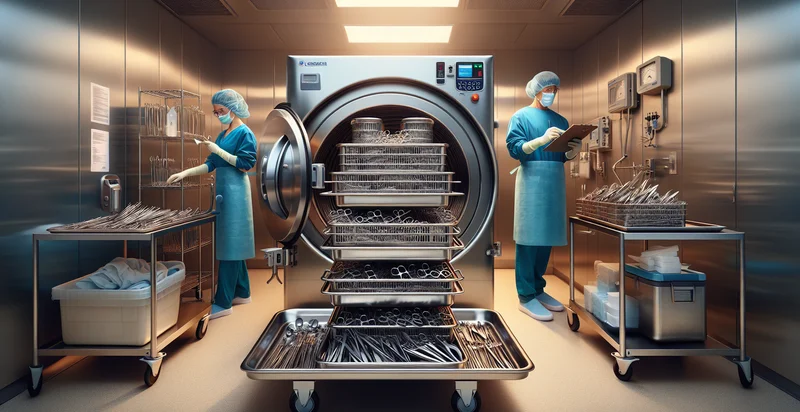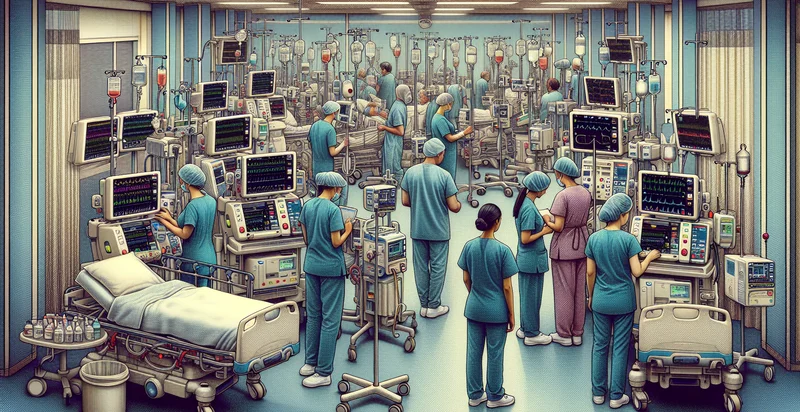Identify if medical equipment is sterilized
using AI
Below is a free classifier to identify if medical equipment is sterilized. Just upload your image, and our AI will predict if medical equipment is sterilized - in just seconds.

Contact us for API access
Or, use Nyckel to build highly-accurate custom classifiers in just minutes. No PhD required.
Get started
import nyckel
credentials = nyckel.Credentials("YOUR_CLIENT_ID", "YOUR_CLIENT_SECRET")
nyckel.invoke("if-medical-equipment-is-sterilized", "your_image_url", credentials)
fetch('https://www.nyckel.com/v1/functions/if-medical-equipment-is-sterilized/invoke', {
method: 'POST',
headers: {
'Authorization': 'Bearer ' + 'YOUR_BEARER_TOKEN',
'Content-Type': 'application/json',
},
body: JSON.stringify(
{"data": "your_image_url"}
)
})
.then(response => response.json())
.then(data => console.log(data));
curl -X POST \
-H "Content-Type: application/json" \
-H "Authorization: Bearer YOUR_BEARER_TOKEN" \
-d '{"data": "your_image_url"}' \
https://www.nyckel.com/v1/functions/if-medical-equipment-is-sterilized/invoke
How this classifier works
To start, upload your image. Our AI tool will then predict if medical equipment is sterilized.
This pretrained image model uses a Nyckel-created dataset and has 2 labels, including Non Sterilized Equipment and Sterilized Equipment.
We'll also show a confidence score (the higher the number, the more confident the AI model is around if medical equipment is sterilized).
Whether you're just curious or building if medical equipment is sterilized detection into your application, we hope our classifier proves helpful.
Related Classifiers
Need to identify if medical equipment is sterilized at scale?
Get API or Zapier access to this classifier for free. It's perfect for:
- Sterilization Compliance Monitoring: The True image classification function can be utilized in hospitals and clinics to ensure compliance with sterilization protocols for medical equipment. By automatically analyzing images of instruments, the system can flag any non-sterilized items, helping facilities maintain high standards of hygiene and safety.
- Quality Control in Sterilization Processes: Medical device manufacturers can implement this classification function during quality control processes to verify that all products are adequately sterilized before packaging. This adds an additional layer of assurance that all products reaching healthcare providers meet stringent safety standards.
- Equipment Tracking and Workflow Optimization: Hospitals can integrate the image classification function into their inventory management systems to track sterilization status in real-time. This functionality can optimize equipment usage schedules, ensuring that all items are available and sterile when needed for procedures.
- Infection Control Audits: Infection control teams can use this classification function during audits to assess compliance with sterilization protocols. By automating the identification of sterilized versus non-sterilized equipment, auditors can save time and focus on improving sterilization processes and training staff.
- Remote Monitoring for Sterilization Facilities: Sterilization facilities can leverage the True image classification function to monitor equipment sterilization remotely. This capability allows managers to ensure that all equipment meets sterilization standards without the need for onsite inspections, enhancing operational efficiency.
- Training and Education for Healthcare Staff: Medical training programs can use the image classification technology as a teaching tool for sanitation and sterilization techniques. By providing instant feedback on equipment images, trainees can learn to identify properly sterilized instruments and reinforce best practices.
- Regulatory Compliance Reporting: Compliance officers in healthcare institutions can utilize this image classification function as part of their reporting to regulatory bodies. By offering automated verification of sterilization practices, institutions can create more robust compliance reports that demonstrate adherence to health and safety regulations.


